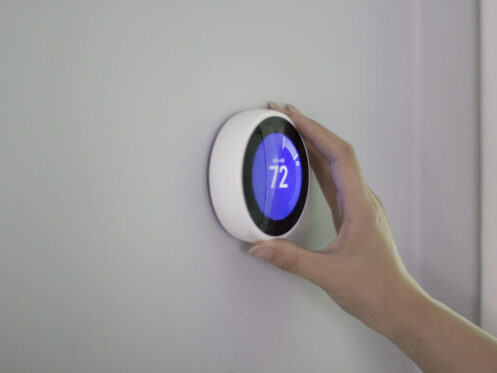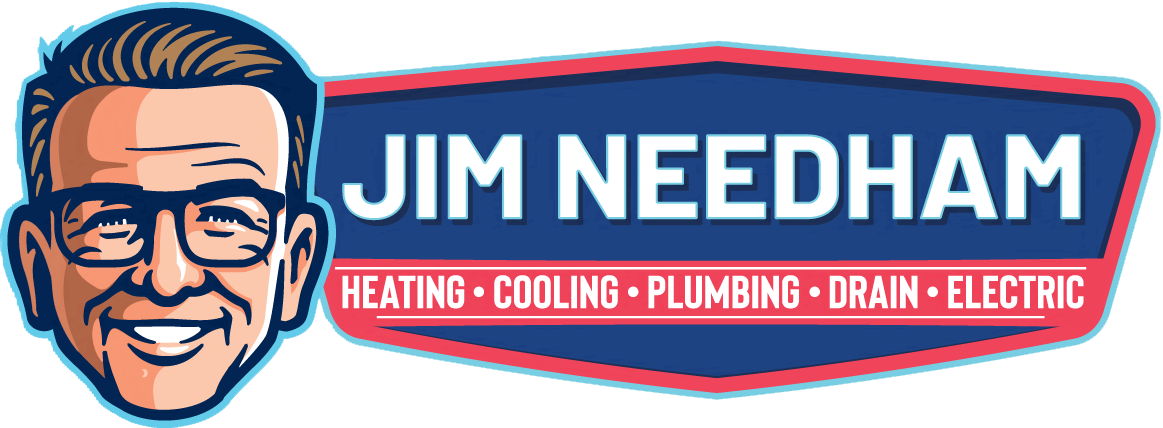Many households in Colorado depend on an air conditioner or heat pump to keep them comfortable during the hot months. The downside to that comfort is high energy consumption and the cost of electricity. With the right features and programming, a smart thermostat can make your cooling system more efficient and affordable.
Program a Schedule
Similar to programmable models, you can enter your family’s schedule into a smart thermostat to reduce energy costs. In fact, the U.S. Department of Energy (DOE) suggests you can save up to 10% on your utility bills with this feature. All you need to do is lower your temperature by seven to 10 degrees from your standard setting eight hours a day. Many households can do that for 12 or even 16 hours a day to save even more.
One key period to target for these savings is when household members sleep at night. Have your thermostat lower the temperature 30 minutes before bedtime and restore it 30 minutes before you wake. Another excellent period for savings is while family members are away from home at work and school.
Many smart thermostats support profiles that make this scheduling even more sophisticated. You can have one schedule for weekdays and another for weekends. Some households will benefit from a unique schedule for each day of the week. “Hold” is a mode that lets you temporarily disable your schedule. This is useful, for instance, when you have a day home from work or school. Alternatively, “vacation mode” lets you set an even more efficient temperature for when you’ll be away for 48 hours or more.
In addition, numerous smart models come with algorithms that learn your family’s routine and adjust your cooling schedule accordingly. Despite the energy-saving potential, research from the Lawrence Berkeley National Laboratory found that up to 50% of homeowners with programmable thermostats do not use the scheduling features of their thermostats more effectively. Smart thermostats address this by automatically learning and adapting to your family’s daily routines. Using this feature ensures consistent energy savings and optimal comfort without the hassle of manually entering your household’s schedule and updating it whenever someone’s routine changes.
Take Advantage of Geofencing
Geofencing is a feature included in many smart thermostats to enhance scheduling capabilities. While smart thermostat programming is useful, not every household follows a consistent schedule. Geofencing addresses this by dynamically adjusting the thermostat based on family members’ locations in real time.
Geofencing works by pairing each family member’s smartphone with the smart thermostat, which then uses GPS to identify their location. A virtual fence or perimeter, such as a 3-mile radius, is set around your home. Family members are either inside or outside this perimeter.
When family members are outside the fence, the thermostat shifts to energy-saving settings. It adjusts to a more comfortable setting when they are within the perimeter. Some advanced models can even detect when you’re on your way home and begin adjusting the temperature accordingly, ensuring a comfortable environment upon your arrival. This feature helps maximize energy efficiency without compromising comfort, making it ideal for households with varying schedules.
Smart Setbacks
Smart setbacks are a feature of modern smart thermostats that manage the transition from energy-saving to comfort settings. Instead of adjusting the temperature all at once, which can lead to high energy consumption, smart setbacks gradually shift the temperature. This minimizes the energy spikes typically associated with cooling your home to the desired comfort level.
The benefit to homeowners who use this feature is significant energy savings without compromising comfort. For instance, if you set your thermostat to an energy-saving mode while at work, the smart setback feature will begin gradually adjusting the temperature to a comfortable level before you arrive home. According to the DOE, this gradual adjustment can optimize energy use and provide noticeable savings on utility bills.
Set a Comfortable and Efficient Temperature
Set your thermostat to the highest setting that makes you comfortable, and augment your cooling with ceiling fans and humidity control. The DOE suggests 78 degrees Fahrenheit as the sweet spot between comfort and efficiency. This setting won’t be comfortable for everyone, but be mindful that every degree above 72 degrees saves you about 3% on cooling.
Achieve Optimal Relative Humidity
Humidity is the amount of water vapor in the air. Relative humidity (RH) is the percentage of moisture in the air relative to what it can hold at a specific temperature. Lower RH can make you feel more comfortable at higher temperatures, while higher RH can make you feel less comfortable. Smart thermostats often provide an RH reading. You should target an RH between 40% and 50% in the summer.
Consider a whole-house dehumidifier if you can’t achieve this range through AC alone. If your smart thermostat has humidity control, it can also manage the dehumidifier. These systems often offer a “feels like” option, which adjusts the actual temperature and RH to match your comfort level. By optimizing humidity levels, your HVAC system doesn’t have to work as hard to maintain a comfortable temperature, which can lead to lower monthly utility bills.
Make Use of Multiple Remote Sensors
A downside to a centrally located thermostat is that the readings are not necessarily accurate for the entire home. Many smart thermostats support remote sensors to overcome this scenario.
If you don’t have zoned cooling, your smart thermostat uses information from remote sensors to average the temperatures from different rooms, ensuring a more balanced and comfortable living environment. Models designed for zoned HVAC systems can reduce utility costs by adjusting the temperature in the zones your family isn’t using, such as a guest room.
Use Energy Monitoring to Improve Home Efficiency
Smart thermostat apps offer valuable insights into your home’s energy consumption by providing monthly and annual reports. For example, they can help you identify irregular energy usage patterns, which may indicate underlying HVAC issues that need attention.
In addition to detecting HVAC inefficiencies, app reports highlight areas of high energy consumption, helping you pinpoint where your home may be less efficient. For instance, outdated windows and inadequate insulation in certain rooms can lead to excessive cooling costs, which smart thermostats can help identify. Using the information from smart thermostat apps, you can make informed decisions about upgrades to your house to improve its energy efficiency.
Turn On Notifications
Smart thermostats are Wi-Fi enabled, allowing them to push notifications to your phone. Your thermostat app can remind you to change your air conditioner’s filter or when it is time to schedule maintenance. It can also alert you when there is an issue, such as if your cooling system stops working while you are at work.
Contact the Pros
At Jim Needham Heating Cooling Plumbing and Drain, we have been serving the residents of Thornton, CO, and the surrounding areas for over thirty years. We install, repair, and maintain heating and cooling systems. In addition, we provide ductwork, plumbing, and smart thermostat services. Contact us today to schedule an appointment with one of our experienced team members.

